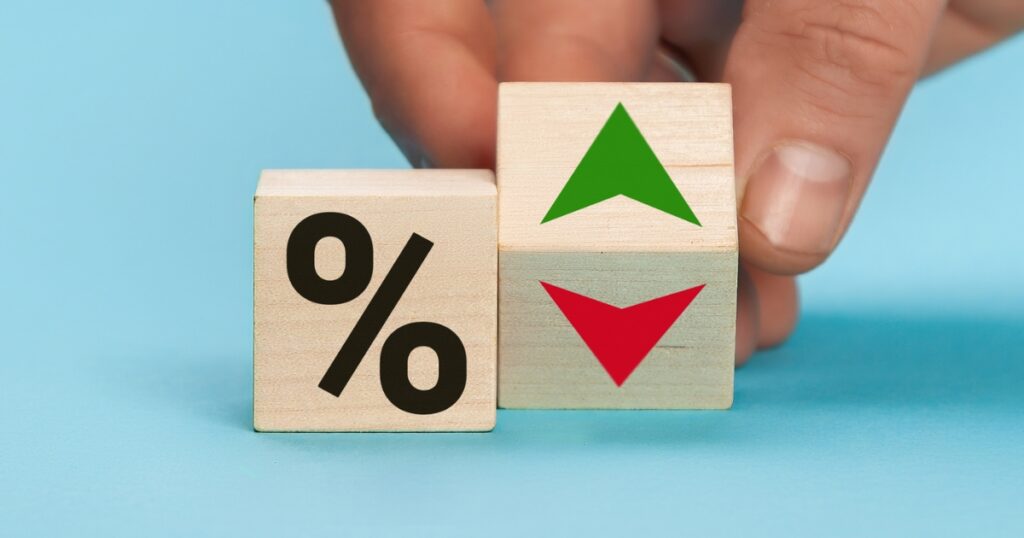
The repo rate, also known as the repurchase rate, is a crucial financial term that plays a pivotal role in the economy, influencing various aspects from mortgage interest rates to inflation. This key rate, determined by the South African Reserve Bank (SARB), dictates the interest rate at which commercial banks can borrow money from the central bank. This, in turn, impacts the overall cost of borrowing for businesses and consumers alike. Understanding the repo rate is essential for making informed financial decisions.
Key Takeaways
- Definition and Role: The repo rate, set by the South African Reserve Bank, determines the interest rate at which commercial banks borrow from the central bank, thereby influencing overall borrowing costs.
- Economic Impact: Adjustments in the repo rate have a significant impact on economic activity. Lowering the repo rate encourages spending and investment, while raising it helps control inflation by making borrowing more expensive.
- Consumer Effects: Changes in the repo rate directly affect loan interest rates for consumers. Lower repo rates reduce borrowing costs, making loans more affordable, whereas higher rates increase borrowing costs.
What is the Repo Rate?
The repo rate, determined by the Monetary Policy Committee (MPC) of the Reserve Bank, signifies the interest rate at which the central bank lends money to commercial banks within the country. This rate is adjusted periodically by the Reserve Bank to keep inflation within the target range of 3% to 6%.
How Does the Repo Rate Influence the Economy?
Increasing the repo rate makes borrowing more costly for banks. As a result, borrowing and spending within the economy decline, leading to a reduction in overall economic activity. With reduced money circulation, consumer spending decreases, making it challenging for businesses to raise prices, thereby assisting in controlling inflation.
Impact on Consumers
Changes in the repo rate directly affect the interest rates set by commercial banks and other lending institutions. When the repo rate rises, these institutions typically increase their interest rates as well. For consumers, this translates into higher costs for loans, unless they have a fixed interest rate. Essentially, an increase in the repo rate results in elevated borrowing expenses.
Understanding these dynamics enables individuals and businesses to gauge how fluctuations in the repo rate may influence their financial decisions, particularly in terms of borrowing and economic activity.
Interest rates have a significant impact on the currency’s value. Learn How Much is the Rand Worth? and discover how the repo rate shapes economic outcomes in South Africa.

Factors Influencing REPO Rate Decisions
The table below outlines the various factors that influence the decisions made by the South African Reserve Bank (SARB) regarding the REPO rate. Each factor plays a significant role in the overall economic landscape, impacting the REPO rate either directly or indirectly.
| Factor | Description | Influence on REPO Rate |
|---|---|---|
| Inflation Rate | Measures the rate at which prices increase | High inflation leads to higher REPO rates |
| Economic Growth | GDP growth rate | Strong growth may lead to higher REPO rates |
| Unemployment Rate | Percentage of the workforce that is unemployed | High unemployment may lead to lower REPO rates |
| Exchange Rates | Value of the South African Rand against other currencies | Weak Rand may lead to higher REPO rates |
| Global Economic Conditions | Overall health of the global economy | Unfavourable conditions may influence REPO rate increases |
Inflation Rate
Inflation is a crucial measure of economic stability, reflecting how fast the general price level of goods and services increases, thereby reducing purchasing power.
Influence: When inflation is high, the SARB may raise the REPO rate to curb spending and borrowing, cooling down the economy. Conversely, low inflation may prompt a reduction in the REPO rate to stimulate economic activity.
Economic Growth
Economic growth is gauged by the Gross Domestic Product (GDP) growth rate, indicating the overall economic health and productivity of the country.
Influence: Robust economic growth can lead the SARB to increase the REPO rate to prevent overheating of the economy. Conversely, during periods of slow growth, the REPO rate may be lowered to boost economic activity.
The repo rate often adjusts in response to the performance of the Gross Domestic Product in South Africa, influencing borrowing costs across the economy.
Unemployment Rate
The unemployment rate shows the percentage of the workforce that is jobless and actively seeking work.
Influence: High unemployment typically signals economic distress, prompting the SARB to lower the REPO rate to encourage borrowing and investment. Lower unemployment might lead to a higher REPO rate if the economy is performing well and there is a risk of inflation.
Exchange Rates
Exchange rates determine the value of the South African Rand (ZAR) against other currencies, influenced by factors such as trade balances, foreign investment, and political stability.
Influence: A weaker Rand can cause imported inflation as the cost of imported goods rises, potentially prompting the SARB to increase the REPO rate to control inflation. Conversely, a stronger Rand can help keep inflation in check, possibly resulting in a lower REPO rate.
As the rand tumbles, the Reserve Bank may have no choice but to act. See why Potential Rand Decline to R22 to the Dollar is a must-read for anyone tracking the connection between currency movements and the repo rate.
Global Economic Conditions
Global economic conditions encompass factors like international trade, global financial markets, and economic policies of other countries.
Influence: Unfavourable global conditions, such as economic slowdowns in major economies or geopolitical tensions, can lead to increased uncertainty and risk, prompting the SARB to adjust the REPO rate accordingly. Positive global conditions can support stable or lower REPO rates.
About Arcadia Finance
Get your loan effortlessly with Arcadia Finance. No application fees and 19 trusted lenders, all meeting South Africa’s National Credit Regulator standards. Streamlined, reliable options for your financial needs.
REPO Rate History in South Africa
| Year | REPO Rate (%) | Key Economic Events |
|---|---|---|
| 2015 | 5.75 | Economic Slowdown |
| 2016 | 6.75 | Rising Inflation |
| 2017 | 6.50 | Stabilisation Efforts |
| 2018 | 6.75 | Policy Adjustment |
| 2019 | 6.50 | Moderate Growth |
| 2020 | 3.50 | COVID-19 Pandemic |
| 2021 | 3.50 | Recovery Phase |
| 2022 | 4.75 | Inflation Concerns |
| 2023 | 5.50 | Economic Stabilisation |
| 2024 | 8.25 | Inflation Control and Economic Uncertainty |
In 2024, the South African Reserve Bank (SARB) opted to maintain the repo rate at 8.25%. This decision aimed to address ongoing inflationary pressures and navigate uncertain economic conditions. The rate has been unchanged since May 2023, reflecting the SARB’s cautious strategy to stabilize the economy amidst both global and local challenges.

What is the Prime Lending Rate?
The prime lending rate is the interest rate at which banks offer loans to their most creditworthy customers. It is heavily influenced by the repo rate, which is the rate at which the central bank lends money to commercial banks. Banks add a margin to the repo rate to cover their costs and ensure profitability. For instance, if the repo rate stands at 5%, banks might set the prime lending rate at 8%, adding a 3% margin.
When the repo rate decreases, the prime lending rate usually follows suit. For example, a reduction in the prime lending rate from 12% to 9% can result in significant savings. On a R1.5 million home loan, the monthly repayment could decrease by approximately R3,200, leading to total interest savings of around R540,000 over a 20-year period.
Understanding the impact of interest rates on loans is crucial for making informed financial decisions. When the repo rate changes, it directly affects the cost of borrowing. Dive deeper into how these changes can influence your loan repayments and financial planning.
Monthly Bond Instalment Savings
Here’s a table showing the monthly savings and interest savings over 20 years when the prime lending rate drops from 12% to 9% for various bond amounts:
| Bond Amount | Monthly Saving from 12% to 9% | Interest Saving Over 20 Years from 12% to 9% |
|---|---|---|
| R250,000 | R625 | R150,446 |
| R500,000 | R1,250 | R300,892 |
| R750,000 | R1,875 | R451,338 |
| R1,000,000 | R2,500 | R601,784 |
| R1,250,000 | R3,125 | R752,230 |
| R1,500,000 | R3,750 | R902,676 |
| R2,000,000 | R5,000 | R1,203,568 |
| R3,000,000 | R7,500 | R1,805,352 |
| R4,000,000 | R10,000 | R2,407,136 |
| R5,000,000 | R12,500 | R3,008,920 |
| R6,000,000 | R15,000 | R3,610,704 |
This table illustrates the substantial financial impact that a reduction in the prime lending rate can have on monthly bond repayments and the total interest paid over the life of a 20-year bond.
How Does the Repo Rate Affect You?
The repo rate is the interest rate at which the South African Reserve Bank (SARB) lends money to commercial banks. This rate is determined by the SARB’s Monetary Policy Committee, which adjusts it to manage inflation and ensure it stays within the target range.
What happens when the repo rate decreases? A reduction in the repo rate can lead to lower interest rates on your home loans, car loans, and even savings and investment products, as many other lending and interest rates are tied to it. This means your monthly debt repayments could decrease. Conversely, the interest earned on your savings accounts might also decline.
For example, if you have a savings account with R500,000 and an interest rate of 3%, your monthly earnings would be R1,250. If the repo rate cuts lead to your interest rate dropping to 2.5%, your monthly earnings would reduce to R1,041.67.
What happens when the repo rate increases? When the repo rate rises, it generally results in higher interest rates on your loans and mortgages, which means your monthly repayments increase. However, the positive side is that the interest rates on savings and investment products will also rise. This creates an opportunity to consider saving towards long-term goals.
For instance, if you have a savings account with R800,000 and an interest rate of 3.5%, your monthly returns would be R2,333.33. If the repo rate increases, raising your interest rate to 4%, your monthly returns would increase to R2,666.67.
Understanding repo rates is vital in predicting economic trends. Stay informed about whether South Africa is heading into a recession, and prepare yourself for potential economic shifts.

How the REPO Rate Affects the Economy
Impact on Borrowing Costs The repo rate directly affects the cost of borrowing for banks, influencing the interest rates offered to consumers and businesses. When the repo rate is lowered, banks can borrow money at a cheaper rate, enabling them to reduce interest rates on loans and mortgages. This decrease in borrowing costs encourages increased spending and investment, as consumers and businesses find it more affordable to take out loans for purchases and expansions. Conversely, an increase in the repo rate raises borrowing costs, potentially dampening consumer spending and business investments due to higher loan repayment obligations.
Influence on Inflation The repo rate is a crucial tool used by central banks to manage inflation. By adjusting the repo rate, the South African Reserve Bank can control the amount of money circulating in the economy. Lowering the repo rate typically boosts the money supply, as cheaper borrowing stimulates spending and investment, potentially increasing demand for goods and services. If demand surpasses supply, prices may rise, leading to inflation. Conversely, raising the repo rate makes borrowing more expensive, curbing spending and investment, which can help mitigate inflation by reducing overall demand in the economy.
Effect on Economic Growth The repo rate significantly impacts economic growth. A lower repo rate can stimulate economic activity by making credit more accessible and affordable, encouraging business expansion and consumer spending. This heightened economic activity can result in higher employment rates and overall economic improvement. Conversely, a higher repo rate can slow economic growth by raising the cost of borrowing, potentially decreasing consumer spending and business investment. This cautious approach is often employed to prevent economic overheating and maintain inflation control. Balancing the repo rate is critical for sustaining stable economic growth.
Conclusion
The repo rate is a critical economic tool that has a profound impact on borrowing costs, inflation, and overall economic growth. Through adjustments to this rate, the South African Reserve Bank can shape financial behavior, either stimulating economic activity or controlling inflationary pressures. For consumers, fluctuations in the repo rate can determine whether loan repayments are manageable or become burdensome, underscoring its significance in everyday financial decisions. Therefore, staying abreast of repo rate changes and their implications is crucial for making informed financial decisions.
Frequently Asked Questions
The repo rate in South Africa is the interest rate at which the South African Reserve Bank (SARB) lends money to commercial banks. This rate is adjusted periodically by the SARB to manage inflation and influence economic activity.
When the repo rate increases, borrowing becomes more expensive for banks. Consequently, banks raise the interest rates they charge consumers on loans and mortgages. This typically results in reduced consumer spending and business investment, aiding in controlling inflation but potentially slowing economic growth.
The repo rate itself is neither inherently good nor bad; its impact depends on the economic context. A lower repo rate can stimulate economic activity by making borrowing cheaper, while a higher rate can help control inflation by reducing spending and investment.
The repo rate is the rate at which the central bank lends money to commercial banks, whereas the interest rate refers to the rate consumers pay on loans from banks. Changes in the repo rate influence the interest rates set by banks because they affect banks’ borrowing costs, which are then passed on to consumers.
How often does the South African Reserve Bank review the repo rate?
The South African Reserve Bank reviews the repo rate periodically, typically during meetings of the Monetary Policy Committee (MPC) held several times a year. The frequency and timing of these reviews can vary based on economic conditions and the need to address inflationary pressures or stimulate economic growth.



